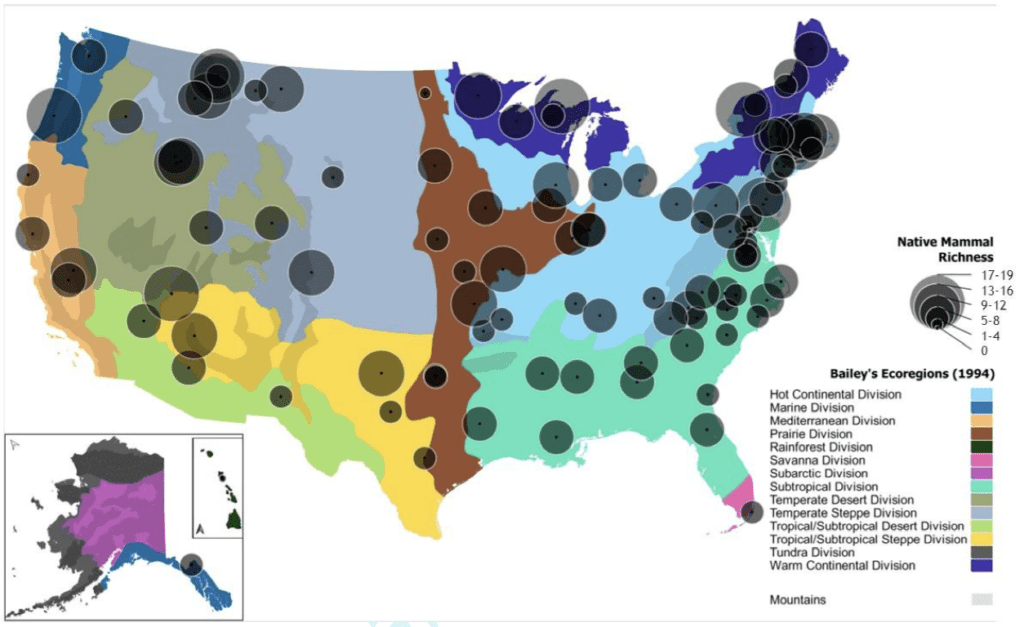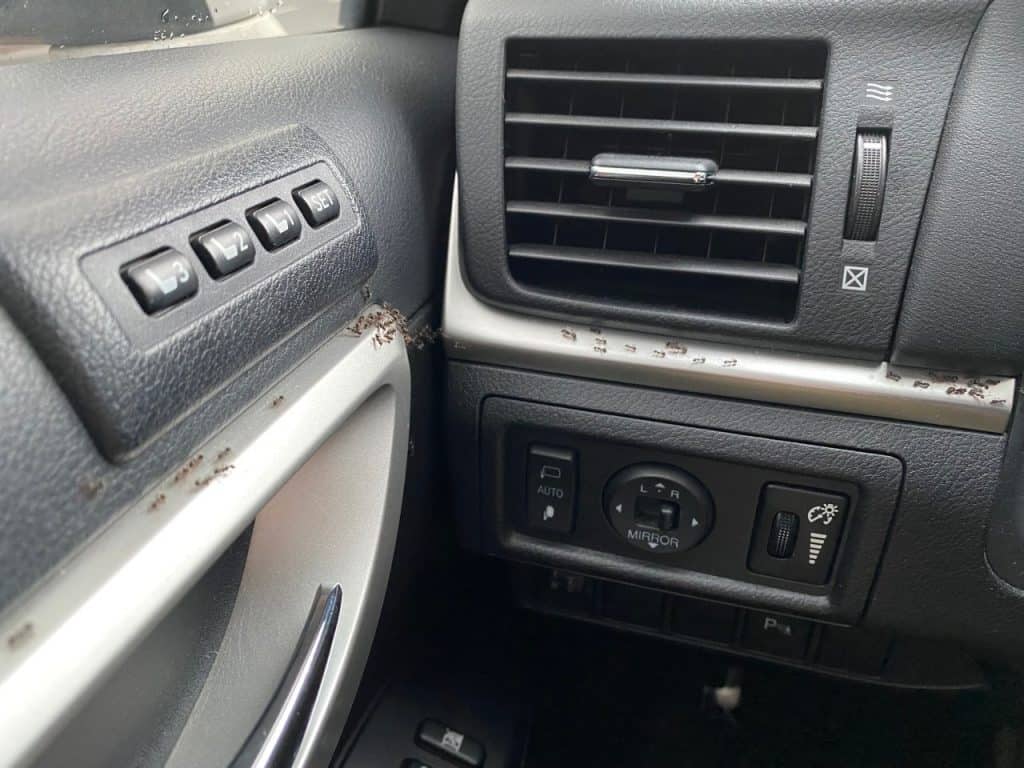Share this article
Snapshot USA seeks biologists to aid national mammal survey
Researchers are recruiting wildlife biologists to contribute to the second year of a project to collect camera trap images to inform scientists about mammals across the United States.
Organizers say the Snapshot USA project is the first national mammal survey conducted by wildlife professionals rather than citizen scientists.

A map of native mammal richness throughout the U.S. in 2019 based on Snapshot USA data.
Credit: Snapshot USA
“At the state at which habitats are changing and climates are changing, we need real time data on species distribution and abundance to help inform conservation and management strategies moving forward, whether that’s for game species, which are important for outdoor enthusiasts and hunting opportunities, or for critically endangered species like red wolves,” said TWS member Michael Cove, research curator of mammalogy at the North Carolina Museum of Natural Sciences and a researcher on the project. “We need to know where things are to better inform how we can move to a sustainable future.”
Last year, the team recruited data from at least one site in every state, resulting in 165,000 photo sequences, some submitted by wildlife biologists working on projects, others by university students who submitted data as a class taught by an ecologist.

A black-tailed prairie dog (Cynomys ludovicianus) collected via camera trap and used in the Snapshot USA project in 2019. Credit: Snapshot USA
“We’re hoping to make this an annual thing,” said TWS member Roland Kays, one of the Snapshot USA’s founders. A research professor at North Carolina State University and a scientist at the North Carolina Museum of Natural Sciences, Kays leads the project with Cove and co-principle investigator Bill McShea from the Smithsonian.
“The idea is to do the survey every year and get data together, cleaned and organized and publish that as a snapshot of the state of mammals every year,” Kays said. At the conclusion of the 2019 project, the team — along with 154 co-authors — wrote a paper, currently in review, about overall patterns relating to mammal presence or absence. “The payoff is everybody is a co-author in a big data paper,” Kays said.

A black bear (Ursus americanus) collected via camera trap and used in the Snapshot USA project in 2019. Credit: Snapshot USA
This year, the team hopes to do it all over again with data from more locations.
“We need more in the middle of the country,” Kays said. “We’re trying to sample the different biomes and different habitat types.” In the past, they’ve even included mammals in urban areas, like Baltimore and Detroit.
They also plan to be more efficient with their protocols and to obtain more help in reviewing camera trap photos. “I think with this much data coming in, there’s a lot of work in ensuring the data are really robust and have high quality,” Cove said. “We’ve learned a lot of things along the pipeline of making these data usable and available to other researchers.”
To join the project, wildlifers can visit Snapshot USA and sign up by Aug. 31. Participants commit to sampling 10 to 20 sites using their own camera traps from September-October. Cameras should be spaced no closer than 200 meters and no farther than 500 kilometers apart.
Next year, organizers plan to use artificial intelligence through the Google-sponsored program Wildlife Insights to more efficiently identify species in the photos.
Header Image: A bison (Bison bison) is caught in a camera trap photo in 2019. Researchers have looked at mammal trends in the U.S. based on Snapshot USA data. Credit: Snapshot USA








